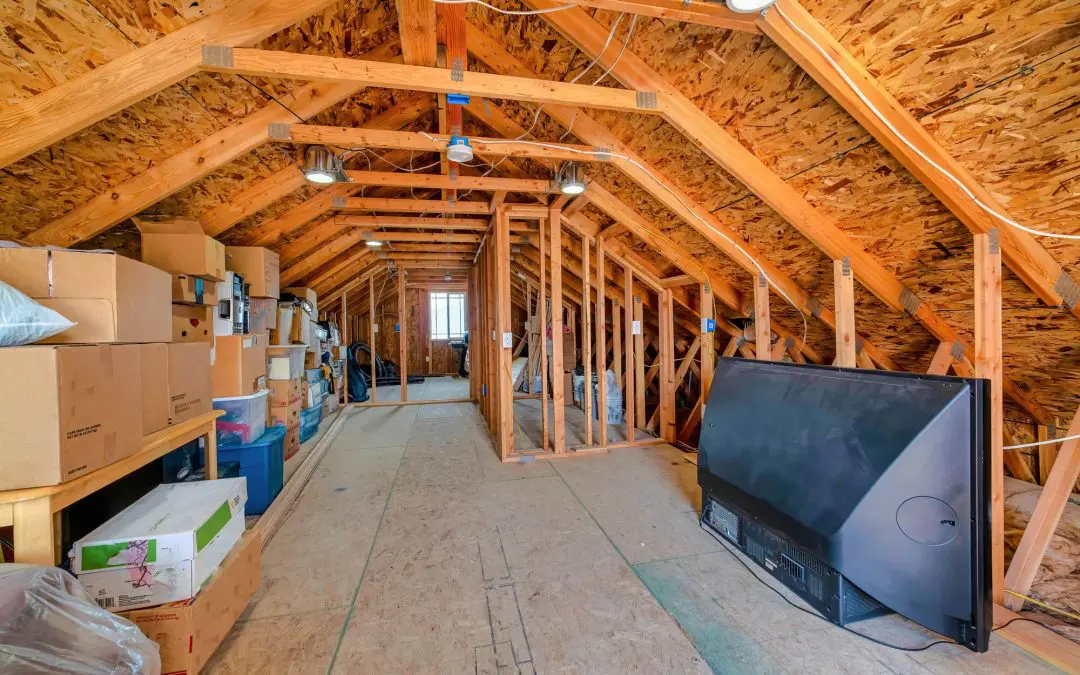Attics can be a great place to store those items you don’t need every day but aren’t quite ready to part with. Whether it’s seasonal decorations, old family keepsakes, or extra furniture, the attic often seems like the perfect out-of-the-way spot. But before you start hauling boxes up the ladder, there are some important things to consider about attic storage. Let’s take a closer look at what you need to know to make the most of your attic space safely and efficiently.
Is Your Attic Ready for Storage?
Before you start packing, it’s essential to make sure your attic is suitable for storage. Many attics weren’t designed with storage in mind and may have issues like extreme temperature fluctuations, poor ventilation, or inadequate flooring. If your attic gets too hot in the summer and too cold in the winter, sensitive items like photographs, electronics, and certain fabrics could deteriorate over time. Proper insulation and ventilation can help regulate the temperature, but some items are better stored elsewhere.
Another consideration is the attic floor. Many attics only have joists with insulation between them, which means stepping in the wrong spot could send you crashing through the ceiling below. If your attic isn’t fully floored, you’ll need to add proper support before using it for storage. Plywood sheets are often used to create a stable walking surface, but it’s crucial to distribute the weight properly to avoid putting stress on your home’s structure.
What Should You Store in Your Attic?
Not everything belongs in the attic. Items that are heat—or moisture-sensitive should be stored in a climate-controlled area instead. But plenty of things can safely go up there, including seasonal decorations, luggage, camping gear, and even some types of furniture. If you plan on storing clothing, make sure it’s packed in airtight containers to protect it from dust and pests.
On the flip side, avoid putting important documents, photographs, electronics, and delicate fabrics in the attic unless you’re confident in the temperature control. Wood furniture can also warp in extreme humidity, and certain plastics may become brittle over time.
Keeping Your Attic Organized and Accessible
A cluttered attic is more than just an inconvenience—it can be a safety hazard. If you want to make the most of your space, consider installing shelving or racks to keep boxes off the floor. Clearly labeling containers will save you time when you need to find something, and keeping a pathway clear will prevent accidents.
If your attic has a pull-down ladder, be mindful of the weight you’re carrying up and down. Heavy, awkward loads can be dangerous, especially if you’re trying to balance on a ladder. If your attic is large enough and you plan on using it regularly, you may want to install a more permanent staircase for easier access.
Preventing Attic Storage Problems Before They Start
One of the biggest risks with attic storage is moisture damage. Even if your attic is dry most of the time, small leaks can go unnoticed until they cause major problems. Check for signs of water intrusion, such as stains on the insulation or discoloration on the rafters. If you see anything concerning, address it before storing anything valuable up there.
Pests are another issue to watch out for. Mice, squirrels, and even insects love the warm, quiet environment of an attic, and they won’t hesitate to chew through cardboard boxes or fabric items. Sealing up any entry points and using plastic bins instead of cardboard can help keep critters out and protect your belongings.
Is Attic Storage Right for You?
Not every home has an attic suitable for storage, and not every homeowner wants to deal with the challenges it presents. If your attic isn’t climate-controlled or well-ventilated, you may be better off using a basement, garage, or even an off-site storage unit. But if you take the right precautions, your attic can be a great solution for keeping your home organized without sacrificing valuable living space.
Frequently Asked Questions
Can I store furniture in the attic?
Some furniture can be stored in the attic, but avoid pieces made of delicate wood or upholstered fabrics unless your attic is climate-controlled. Heat and humidity can cause warping, cracking, and mold growth.
How do I keep my attic storage safe from pests?
Use plastic storage bins instead of cardboard boxes, seal gaps or holes where pests could enter, and check the attic regularly for signs of infestations.
Is it safe to walk in my attic?
Only if your attic has a sturdy floor. Many attics only have exposed joists with insulation and drywall between them, which isn’t safe to walk on. Installing plywood over the joists can create a stable walking surface.
GreenTech Home Inspections offers inspections to homebuyers and sellers in the Las Vegas area. Contact us to schedule our services.

